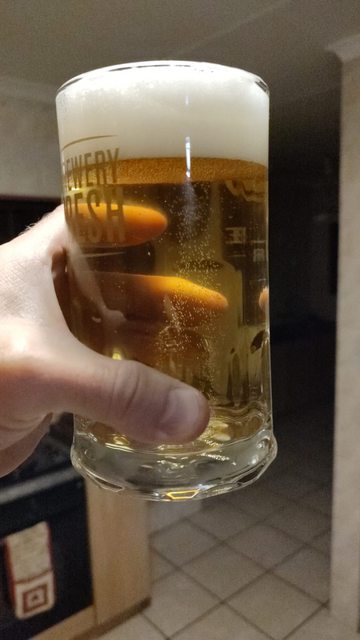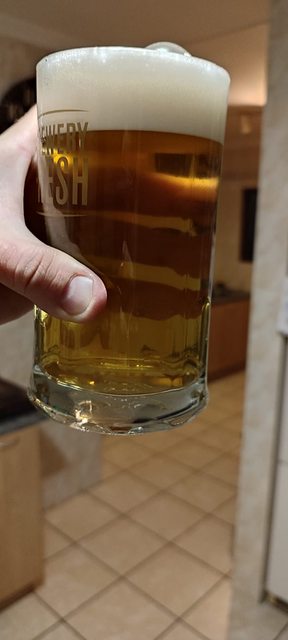Toxxyc
New and loving it
Alrighty, Friday afternoon I couldn't hold my anticipation for this beer and I opened one of the bottled beers. To be clear, this has been carbonating in the bottle under heat since Monday morning, giving me around 5 days of carbonation. I have done this before with other ale yeasts and typically the beers are fairly carbonated by this stage, albeit really "green".
However, this beer was almost completely flat. It had a really faint "pst" when I opened the swingtop, so there is pressure, but it was terribly low. I've read elsewhere that Lutra (or Kveik as a whole, for that matter) doesn't really like bottle conditioning after the cold crash, but I didn't ever expect it to happen to me. I've got the rest of the bottles now at room temp, and I'll take another look this coming weekend.
Has anyone else here ever had this happen?
Anyway, onto the beer, I'm not sure if this is due to the yeast used, or perhaps the carbonation drop was diluted and not properly fermented by the residual yeast, but the beer was fairly sweet. The hop character, same as with the hydrometer sample I tested, was very subdued and hidden under a fresh, soft and fruity note that I'm not at all opposed to, it just doesn't fit the beer style at all.
Overall, it's a good tasting beer, the bottled Kveik version of it, at least. Carbonation in the bottle is just an issue, which is something cool to have on hand for the future video I have planned for two of these bottles. Can't wait to see how the next few weeks work on the beers in the kegs.
That reminds me, I need new post seals before I can carbonate or tap these kegs...
However, this beer was almost completely flat. It had a really faint "pst" when I opened the swingtop, so there is pressure, but it was terribly low. I've read elsewhere that Lutra (or Kveik as a whole, for that matter) doesn't really like bottle conditioning after the cold crash, but I didn't ever expect it to happen to me. I've got the rest of the bottles now at room temp, and I'll take another look this coming weekend.
Has anyone else here ever had this happen?
Anyway, onto the beer, I'm not sure if this is due to the yeast used, or perhaps the carbonation drop was diluted and not properly fermented by the residual yeast, but the beer was fairly sweet. The hop character, same as with the hydrometer sample I tested, was very subdued and hidden under a fresh, soft and fruity note that I'm not at all opposed to, it just doesn't fit the beer style at all.
Overall, it's a good tasting beer, the bottled Kveik version of it, at least. Carbonation in the bottle is just an issue, which is something cool to have on hand for the future video I have planned for two of these bottles. Can't wait to see how the next few weeks work on the beers in the kegs.
That reminds me, I need new post seals before I can carbonate or tap these kegs...












































![Craft A Brew - Safale BE-256 Yeast - Fermentis - Belgian Ale Dry Yeast - For Belgian & Strong Ales - Ingredients for Home Brewing - Beer Making Supplies - [3 Pack]](https://m.media-amazon.com/images/I/51bcKEwQmWL._SL500_.jpg)














